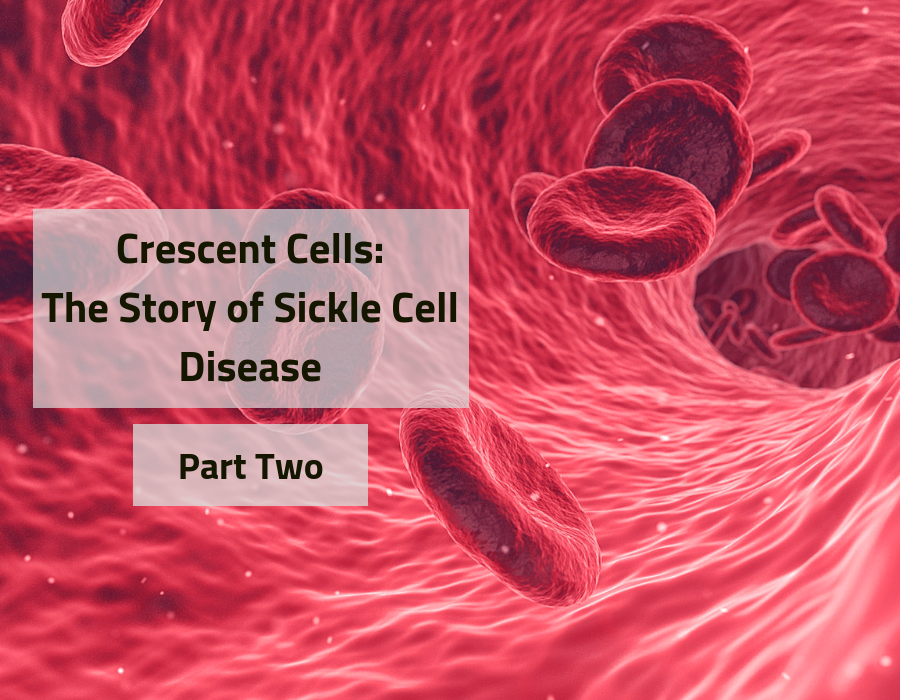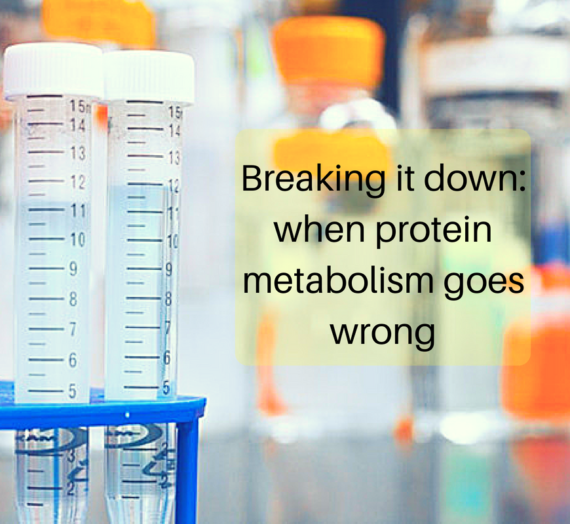Madeeha Hoque
Welcome back to our Genetic Disease series! We’re diving straight back into the blood stream and continuing on from last week’s post with the symptoms, diagnostics and management of Sickle Cell Disease (SCD). Click here for a quick peek at our previous post, introducing sickle cell disorders.
Those suffering from sickle cell disease usually have shorter lifespans in comparison to those who have healthy red blood cells. The disease starts showing signs early in childhood or infancy and can even be detected during pregnancy; a screening for SCD is offered to all pregnant women in England. The severity of the symptoms varies between person to person. There are many different acute and chronic complications, several of which lead to high mortality and morbidity rates.
Sickle Crises
One of the main symptoms, next to anaemia, is the experience of episodes of sharp pain, known as “sickle cell crises” or “sickling crises”. These acute crises of severe pain occur when certain blood vessels leading to organs become blocked due to the stiffness and inflexibility of the sickle-shaped cells, causing them to become caught or stuck in result. This pain has the potential to last up to several days, with the frequency of these episodes appearing varying, depending on individuals. Some may experience frequent episodes between a few weeks at a time, with others averaging out to only having a single, severe crisis once per year.

There are various different types of crises, such as the vaso-occlusive crisis – which is the obstruction of capillaries and restricted blood flow, as mentioned above. This can cause necrosis as well as organ and tissue damage, due to the lack of oxygenated blood reaching the organ in question. This type of crisis mainly affects the lungs, kidneys, the brain (known as a transient ischaemic attack) as well as the spleen – which leads us onto splenic sequestration crises. This crisis leads to severely painful enlargements of the spleen, which is caused by the trapping of the frigid, abnormally shaped erythrocytes. This type of crisis is considered an emergency and could result in death if not treated quickly. There is also the aplastic crisis, which is the acute worsening of anaemia in a patient. This can result in serious levels of fatigue, as well as an increased heart rate and a pale appearance. Aplastic crises are related to haemolytic crises, which are caused by the sudden accelerated drop in haemoglobin levels – this is usually an acute symptom. Another type of crisis is dactylitis, also known as “sausage digit”, which is the inflammation of extremities (such as the fingers or toes). These symptoms can occur as early as sixth months old in children.
Chest symptoms
As well as all this, acute chest syndrome (ACS) can also be experienced by sufferers of sickle cell disease. ACS is defined by experiencing at least two of the following symptoms: hypoxemia, focal abnormality, chest pain, fever or respiratory symptoms, such as severe coughs. Majority of cases of vaso-occlusive crises are accompanied with ACS – with a whopping 80% relation being reported. ACS also accounts for around 25% of deaths in patients who suffer from sickle cell disease. It is largely unclear what could trigger these episodic crises to occur, although it has been speculated that dehydration, acidosis or infections could possibly be behind the cause.

As well as acute crises, patients suffering from SCD can experience numerous other symptoms. Anaemia, as discussed above – which can also result in many other symptoms, such as shortness of breath, increased levels of fatigue and delayed growth development in children. The sudden drop in the number of erythrocytes can also bring the onslaught of painful headaches, dizziness and increases the possibility of fainting. As well as this, SCD can cause blood pressure to rise due to the red blood cells becoming stuck in the blood vessels supplying the lungs. This can also cause pulmonary hypertension, which can ultimately lead to strokes and possible heart failure. Some other symptoms include pneumonia, bone and joint pain, leg ulcers and kidney/urinary issues – such as blood being found in urine. Sickle cell disease can also create gallstones to form, causing abdominal pain and the yellowing of the skin and eyes – known as jaundice. As well as this, the disease could cause blurred or patchy vision, with the possibility of vision loss in extremely rare cases. Not only this, but SCD may also result in priapism, which is known as a painful, prolonged erection of the penis – sometimes lasting up to several hours.
Diagnosing SCD

There are several diagnostics concerning SCD. A CBC (complete blood count) can be performed to gain an idea as to whether enough red blood cells are being formed. As well as this, and MCV (mean corpuscular volume) of red blood cells can be calculated.Sickle cell disease is a fatal and lifelong disorder and those suffering from it will most likely need specialist care provided to them throughout their entire lives. There is no cure for the disease as of yet, however, there exists many different long-term treatments in order to help manage the problems it can cause. For example, the painful crises can be prevented by drinking plenty of fluids and keeping body temperature warm by wrapping up. Regular administration of either every-day and/or strong painkillers (such as paracetamol, ibuprofen or codeine) is also an option to help deal with the pain caused by these crises. As well as this, risks of infections can be reduced by having a daily intake of antibiotics and ensuring full vaccination against known, preventative infections.
Treatments
The World Health Organisation (WHO) has recommended children from birth to the age of five years old who suffer from SCD to take prophylactic penicillin daily due to their immature immune system. This measure is taken since children are much weaker and more prone to many different infections and illnesses which could prove fatal due their undeveloped immune systems Folic acid can also be taken as supplement due to the anaemia caused by SCD. As well as this, it is possible to receive regular blood transfusions (usually between every 3-4 weeks) in response to severe anaemia, to ensure that the oxygen circulating the body has enough access to healthy red blood cells in order to be transported to the muscles and organs. There is also the possibility of a stem cell or bone marrow transplant, which could potentially cure the patient of sickle cell disease – however, due to the various risks involved, this method is not a popular option.

The way to go about treating and dealing with sickle cell disease usually involves intensive and comprehensive care, including education to the families of patients and patients themselves, the administering of antibiotics and various immunisations as preventative measures, as well as prompt and acute action against severe symptoms as the appear.
Next time on our Genetic Diseases journey – Huntington’s Disease! Keep your eyes peeled!
Sources:
- Olujohungbe A, Burnett AL (March 2013). “How I manage priapism due to sickle cell disease“. British Journal of Haematology. 160 (6): 754–65.
- Khatib R, Rabah R, Sarnaik SA (January 2009). “The spleen in the sickling disorders: an update“. Pediatric Radiology. 39 (1): 17–22.
- Glassberg J (August 2011). “Evidence-based management of sickle cell disease in the emergency department“. Emergency Medicine Practice. 13 (8): 1–20.
- Drasar E, Igbineweka N, Vasavda N, Free M, Awogbade M, Allman M, Mijovic A, Thein SL (March 2011). “Blood transfusion usage among adults with sickle cell disease – a single institution experience over ten years“. British Journal of Haematology. 152 (6): 766–70.




